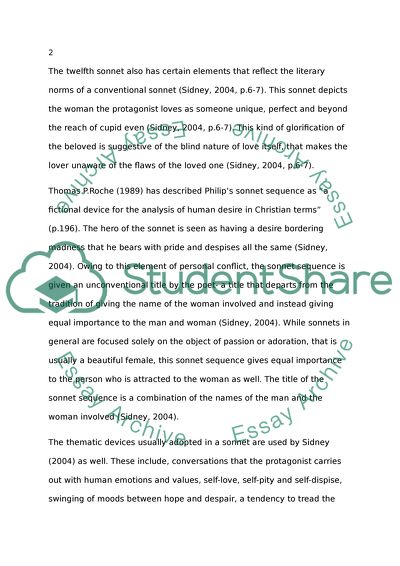Cite this document
(“Sonnets Essay Example | Topics and Well Written Essays - 2250 words”, n.d.)
Retrieved from https://studentshare.org/literature/1460767-3-choose-any-three-sonnets-from-philip-sidneyyies-sonnet-sequence-astrophil-and-stella-in-your-norton-to-what-extent-is-sidne
Retrieved from https://studentshare.org/literature/1460767-3-choose-any-three-sonnets-from-philip-sidneyyies-sonnet-sequence-astrophil-and-stella-in-your-norton-to-what-extent-is-sidne
(Sonnets Essay Example | Topics and Well Written Essays - 2250 Words)
https://studentshare.org/literature/1460767-3-choose-any-three-sonnets-from-philip-sidneyyies-sonnet-sequence-astrophil-and-stella-in-your-norton-to-what-extent-is-sidne.
https://studentshare.org/literature/1460767-3-choose-any-three-sonnets-from-philip-sidneyyies-sonnet-sequence-astrophil-and-stella-in-your-norton-to-what-extent-is-sidne.
“Sonnets Essay Example | Topics and Well Written Essays - 2250 Words”, n.d. https://studentshare.org/literature/1460767-3-choose-any-three-sonnets-from-philip-sidneyyies-sonnet-sequence-astrophil-and-stella-in-your-norton-to-what-extent-is-sidne.


